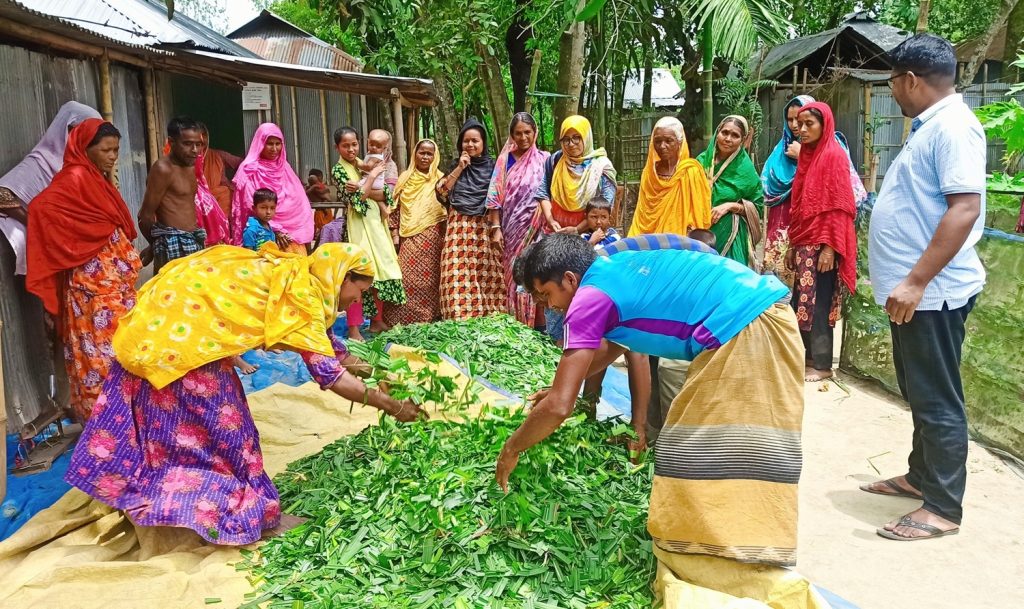From November to February, the Haor basin of Nikli, Itna, Mithamoin, and Ashtagram upazilas of Kishoreganj, turns into a vast pasture where thousands of livestock graze freely on lush green grass. Due to the availability of fodder, many cattle are reared in this region during this dry period. According to the local Livestock Department, approximately 200,000 cows and buffaloes are reared across these four upazilas each year. Then, Boro rice takes the space from March to June, and yields a large amount of straw, which later serves as the main source of cattle feed for the region throughout the year. This is then followed by seasonal inundation of the area from late June to early November, with little or no source of vegetation, creating an acute shortage of animal feed. Consequently, farmers sell most of their animals before the monsoon arrives every year. According to local farmers, the population of cows and buffaloes has reduced by half during this time due to a lack of fodder.
By extending the ‘maize silage’ technology developed by the Bangladesh Livestock Research Institute (BLRI), it is possible to significantly address the fodder shortage during the waterlogging period in the haor regions. After the maize cobs are harvested, the remaining maize plants in the fields may be harvested, chopped, and stored anaerobically as silage for future feeding of animals. Additionally, the maize plant can be entirely chopped and then stored anaerobically as silage when it reaches the “milk-stage” of grain. This maize silage can be used for feeding cattle throughout the year. This way, silage from the unused maize stalk can largely meet the fodder shortage in the Haor region, especially during the flooding season (June to November). According to local officials of the Department of Agricultural Extension, during 2025, maize was cultivated in about 7,790 hectares of land in four Upazilas (Itna, Mithamoin, Austagram and Nikli) of Haor area of Kishoreganj district, which potentially yielded about 154,000 metric tons of maize stover. This yield could potentially produce an equivalent amount of silage.
To harness the potential of maise silage for addressing the cattle-feed shortage in the haor area, a pilot initiative has been undertaken with three partner organisations in Itna, Mithamoin, and Ashtagram upazilas under the PPEPP-EU project. The focus will be on the development of silage-based small enterprises, which will produce silage as a business venture and sell the preserved fodder to dairy farmers during the lean period (from June to December). It is expected that this market-based solution to the fodder crisis in the haor area will make a significant contribution to the growth of the dairy and beef industries in this region. This environmentally beneficial initiative fosters sustainable development among project members by promoting entrepreneurship, creating new employment opportunities, boosting the circular economy, and driving overall area growth.
